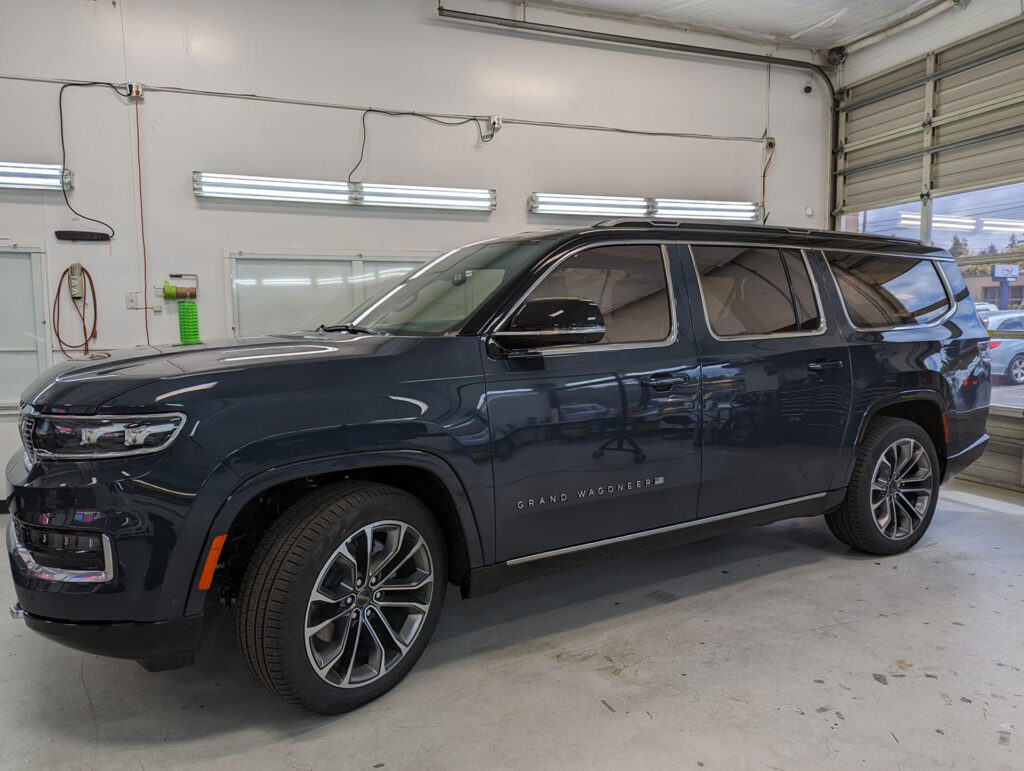Partial vs Full Front vs Full PPF: Which Coverage Makes Sense for Your Budget and Usage?

Introduction
Paint Protection Film (PPF) is one of the smartest investments for your vehicle, but how much protection is enough? Many car owners find themselves at a crossroads when deciding on the best way to shield their vehicle’s finish: Should you go for partial PPF coverage, or invest in full-body protection? The right choice can make a real difference in your car’s appearance, resale value, and maintenance costs. This post unpacks the pros, cons, and cost-to-benefit ratio of both options to help you make a budget-conscious and smart decision.
What is PPF and Why Does Coverage Matter?
PPF is a clear, self-healing polyurethane film that is applied to your car’s painted surfaces. Its main job: to absorb impacts from rocks, road debris, scratches, bird droppings, and other hazards—so your paint remains flawless underneath. When it comes to effectiveness and price, coverage is crucial. More PPF means better protection—but also a higher price tag. Considering the cost of repainting or repairing modern vehicles, prevention with PPF often saves money (and headaches) in the long run.
Partial PPF Coverage
Definition: Partial PPF typically protects high-impact, vulnerable zones—like the front bumper, a portion of the hood and fenders, and side mirrors.
Targeted Protection: Focuses on the areas most likely to get hit by debris or suffer scratches in daily driving.
Cost: Usually ranges from $500 to $2,000, depending on your car and the installer.
Pros:
- Affordable way to start protecting your investment
- Shields the spots that need it most
- Installation is generally faster
Cons:
- Leaves some panels exposed to potential hazards
- Transition lines between protected and unprotected areas may be visible
- Doesn’t enhance resale value like full coverage does
Full Front PPF Coverage
Definition: This level of coverage protects all the most vulnerable forward-facing surfaces, including the full hood, full fenders, side mirrors, and the entire front bumper.
Comprehensive Front-End Protection: Offers a seamless, complete shield for the parts of the car that take the most abuse from road debris.
Cost: Typically ranges from $2,000 to $3,000, but can vary based on the vehicle and installer.
Pros:
- Significantly reduces the risk of rock chips and damage to the front end
- Provides a uniform, line-free finish on the most visible parts of the car
- Excellent balance of protection and cost
Cons:
- Higher investment than partial PPF
- Other areas of the car remain unprotected
Full PPF Coverage
Definition: Every painted surface of your car is wrapped in protective film, providing complete peace of mind.
Total Protection: The entire body is guarded against rock chips, swirl marks, scratches, and fading.
Cost: Expect $4,000–$8,000+, based on the vehicle’s size and complexity.
Pros:
- Seamless, uniform finish across the whole car
- Longest-lasting paint preservation possible
- Strong selling point for future resale
Cons:
- Much higher upfront investment
- Takes more time to install
- Maybe more than needed for cars with light, occasional use
How to Choose: Budget & Usage-Based Scenarios
- Budget-Conscious Drivers
- Frequent commuters drive daily, take occasional trips
- Want solid protection without overspending
- Best Bet: Partial PPF or partial PPF combined with a ceramic coating for added ease of cleaning.
- Long-Term Owners or Enthusiasts
- Plan to keep the car for many years
- Value aesthetics, resale, and flawless paint
- Best Bet: Full PPF or at least full front coverage plus ceramic coating for maximum preservation.
- Leaseholders
- Mainly want to avoid fees for paint wear at lease return
- Best Bet: Partial PPF (bumper + a portion of the hood/fenders) is typically all you need to prevent costly repairs.
- Highway or Performance Drivers
- Regularly exposed to road debris, drive at higher speeds
- Best Bet: Full front PPF or, for high-value vehicles, full body coverage.
Bonus Tip: Hybrid Approach
You don’t have to pick just one route. Many owners find the sweet spot with a hybrid approach: full front-end coverage (where the damage risk is highest) with ceramic coating on the rest of the panels. This combination helps balance robust protection, aesthetics, and budget.
Conclusion
The best PPF coverage for your car depends on your driving habits, how long you’ll own the vehicle, and how much you’re comfortable spending. Protect the areas that matter most to your usage and lifestyle—there’s no one-size-fits-all solution.
Final Advice:
Protect what’s most vulnerable and make the decision work for your lifestyle and wallet.
Ready to take the next step? Get a professional quote from a trusted installer and request side-by-side comparisons tailored to your specific driving habits and budget. That way, you’ll know exactly what fits both your needs and your car’s future.
- Beyond Glare: The 3 Main Types of Window Film That Protect and Enhance Your Storefront - October 23, 2025
- Choosing the Right Commercial Window Tint for Businesses - August 22, 2025
- Future Proofing Your Commercial Buildings With Evolving Window Tinting Technologies - August 20, 2025
